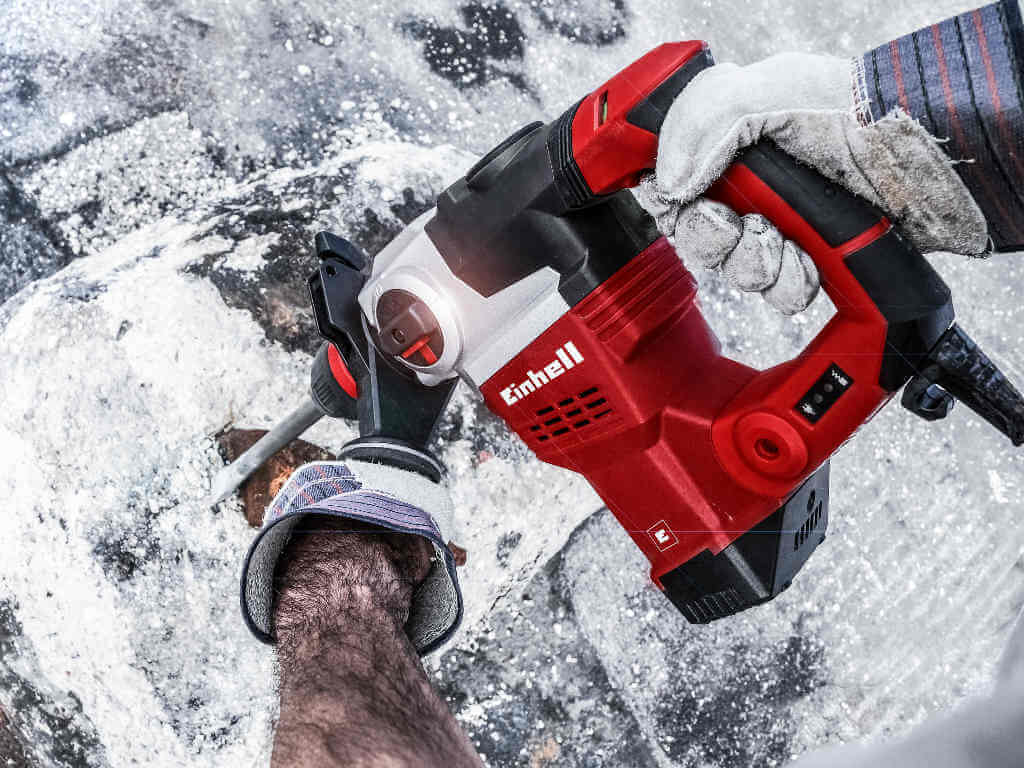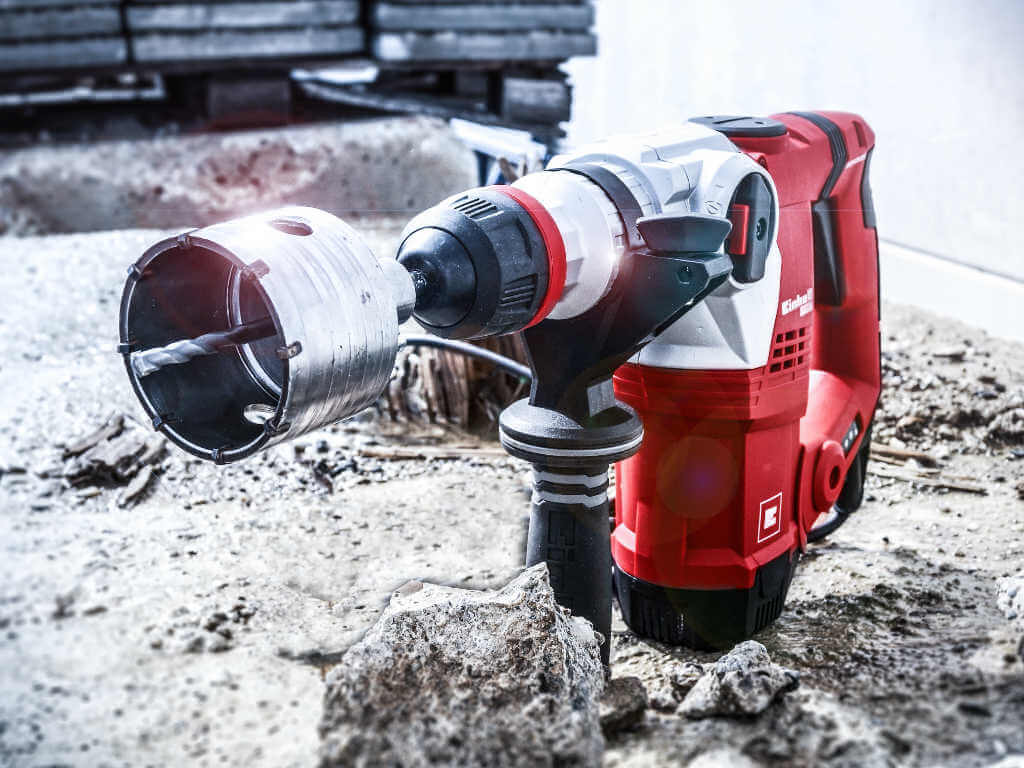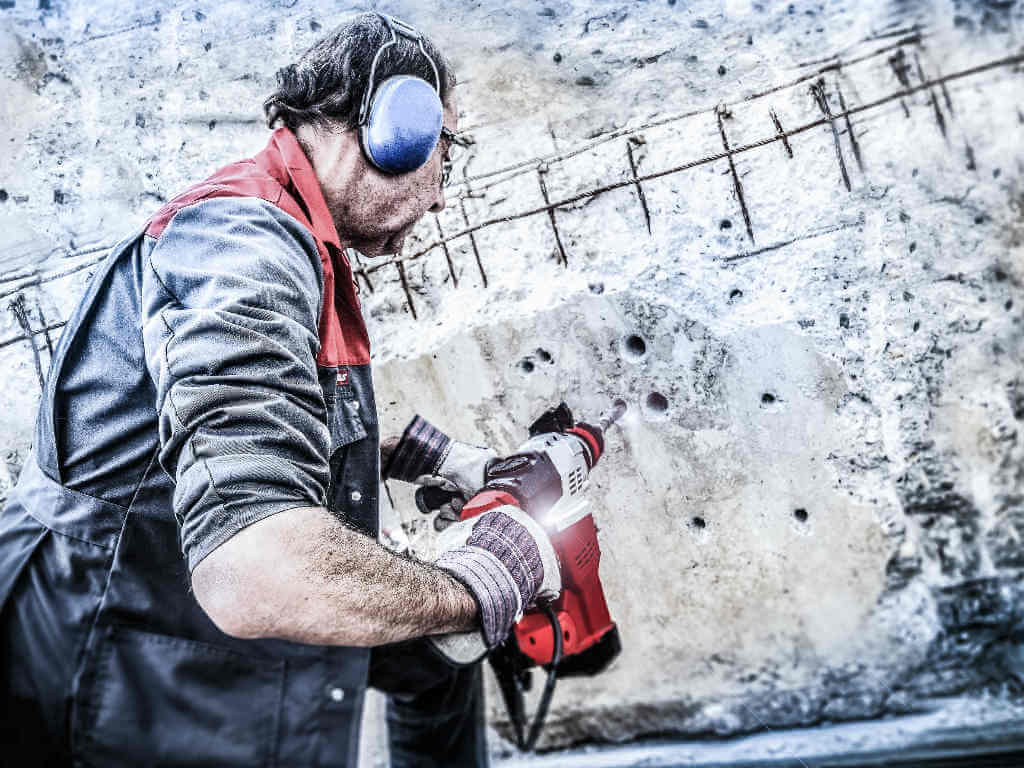Drilling in Concrete with the Rotary Hammer
The classic do-it-yourselfer is confronted with a variety of tasks and the most diverse materials while practicing his hobby. Statistically, drilling and sawing of wood and metal is likely to account for most. But at the latest with the acquisition or even the construction of an own home he must consider another material in the daily challenges. This material is concrete!
With the own home you are in the installation of lamps, shelves on the wall and the laying of pipes no longer dependent on the good will of the landlord and you can beautify your home fully to your own taste and change. The drilling trough masonry or concrete walls, or in general, the drilling of holes in concrete belongs at the latest here to your permanent tasks!
The Way to the Rotary Hammer
A normal cordless screwdriver or cordless drill frequently reaches its limits when drilling in concrete, since these devices are also not aligned with the material. With a cordless rotary hammer or an impact drill one is already much better positioned. Smaller holes pose no problem for these tools and the concrete is perforated in an instant. What differences exist between the tools rotary hammer and impact drill, or which product is suitable for which purpose, you will learn in our separate blog post on this topic.
If a larger hole in the concrete is required, the bore can often be extremely exhausting even with an impact drill. The need for a machine that is even more powerful and allows for large boreholes to be created, as well as takes most of the work off, is revealed. You then come across the all-purpose weapon, which concerns the drilling and steming in concrete and stone walls, the corded rotary hammer.
When choosing the right rotary hammer, the old rule applies, performance is only replaceable by even more performance! The power of the respective drilling machine can be easily identified by the specified impact force in Joule. Incidentally, a joule equals the power needed to lift a bar of chocolate one meter! Of course, it is advisable not to lose sight of the task here. A demolition hammer for hanging up family photos would be a little over the top. The tool or the drilling machine should therefore be tailored to the appropriate materials.
In contrast to the impact drill, the rotary hammer has a pneumatic percussion mechanism which acts directly on the drill chuck and thus on the drill bit in the direction of the drill hole. This minimizes the effort required to drill in stone and concrete by aligning the tool to the correct position. Due to the blows in the direction of the drill, the rotary hammer literally pulls itself into the wall by itself.
If the material in which a hole is to be drilled is, by way of exception, not made of concrete but, for example, of plasterboard, soft stone or even tiles, then the striking mechanism on the machine can be deactivated with the push of a button. This is how the rotary hammer turns into a powerful drilling machine for everyday use in no time at all.


Avoid Dust while Drilling
When drilling with a rotary hammer in concrete, dust formation can’t be prevented, unfortunately the fine concrete dust can really be persistent. Therefore, it is recommended to prevent the drilling dust to settle on the floor, the wall, the windowsill or elsewhere in the room from the beginning. If a second person is present, this is relatively simple: just instruct that person to hold a vacuum cleaner below the borehole. The fine dust is so sucked directly from the vacuum cleaner and has no chance to reach the ground.
Since a rotary hammer is designed for operation with two hands, this possibility is eliminated, however, as soon as you work alone. Although it would certainly be possible to improvise a holder for the vacuum cleaner pipe with adhesive tape, a stepladder and a little creativity, but it also can be much easier. Just stick an open envelope with a little bit of masking tape under the hole to the wall. The falling dust falls for the most part in the envelope and can be easily disposed in the trash after work.


Drills for the Rotary Hammer
Nearly all rotary hammers have an SDS or SDS‐Plus drill chuck for which special drills are required. The biggest advantage of the SDS system is the large‐area and non‐positive connection between the drill and the chuck. Since the SDS system has established as a manufacturer‐independent standard, it is easy to find suitable drills in every price range.
In addition to simple drills in all imaginable lengths, the local hardware stores also contain drill bits and chisels in all sizes. Of course you do not have to throw away your old drills, you can even buy classic drill chucks that can be inserted in the SDS system. Thus, you can use your old drill, of course, without powered percussion, comfortably.
All the best when working with the rotary hammer!










